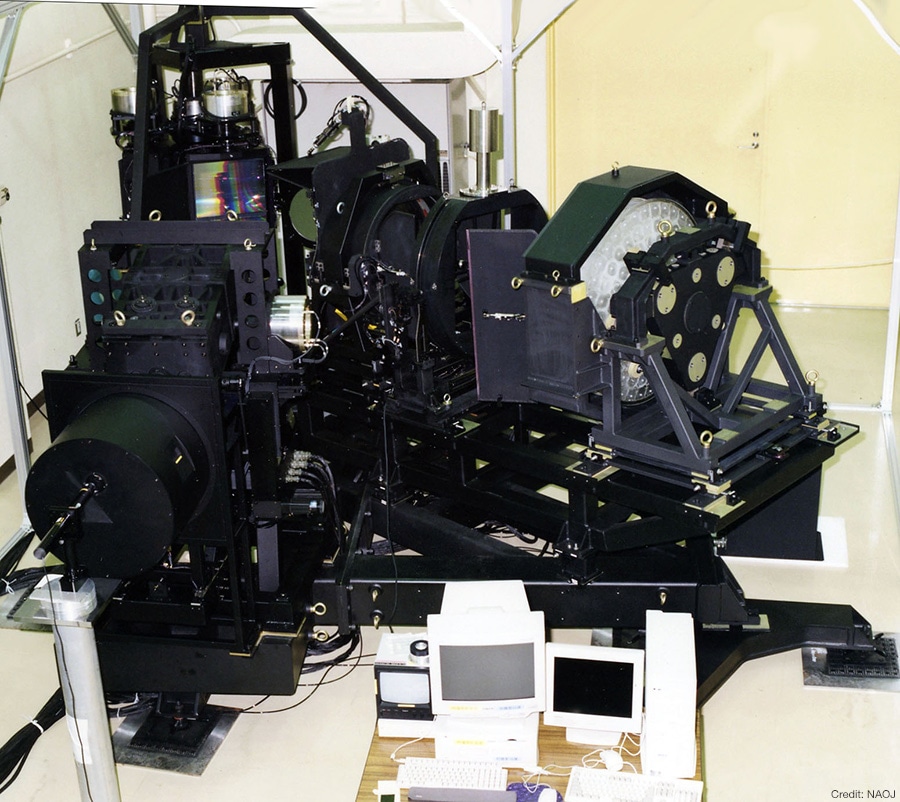May 2 2019
A star with a chemical composition contrary to any other star in the Milky Way Galaxy has been discovered by astronomers in the galaxy. A chemical composition such as this has been observed in a very few stars in dwarf galaxies that orbit the galaxy. This indicates that the star belonged to a dwarf galaxy that merged with the Milky Way.
 The Subaru Telescope High Dispersion Spectrograph. (Image credit: NAOJ)
The Subaru Telescope High Dispersion Spectrograph. (Image credit: NAOJ)
In the survey data from the Large Sky Area Multi-Object Fiber Spectroscopic Telescope (LAMOST), scientists observed the star J1124+4535 for its strange chemical composition. Initial observations revealed that J1124+4535, situated in the constellation Ursa Major (or the Big Dipper), had low occurrences of specific elements like magnesium.
Although follow-up observations using the High Dispersion Spectrograph on the Subaru Telescope confirmed the low abundances of magnesium, relatively high levels of Europium were discovered. This is the first time an element ratio such as this has been recorded in a star from the Milky Way.
Stars are formed from interstellar gas clouds. The parent cloud’s element ratios confer a noticeable chemical signature on stars formed in that cloud. Therefore, stars formed close to each other have comparable element ratios. J1124+4535’s composition doesn’t match with that of any other stars in the Milky Way, suggesting that it must have formed somewhere else.
Chemical signatures comparable to J1124+4535 have been detected in certain stars in dwarf galaxies that orbit the Milky Way. Models of galaxy evolution and simulations indicate that galaxies such as the Milky Way expand by consuming adjacent dwarf galaxies. Therefore, it reasonable for J1124+4535 to have originated in a currently vanished dwarf galaxy that merged with the Milky Way.
The study outcomes have been reported in Nature Astronomy on April 29th, 2019.